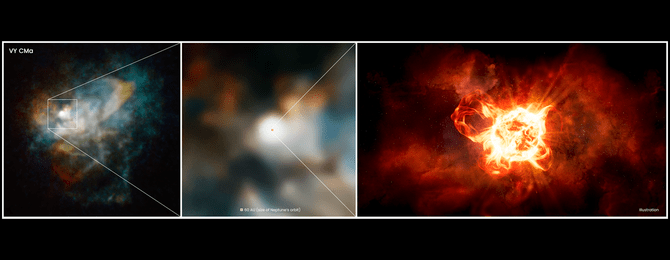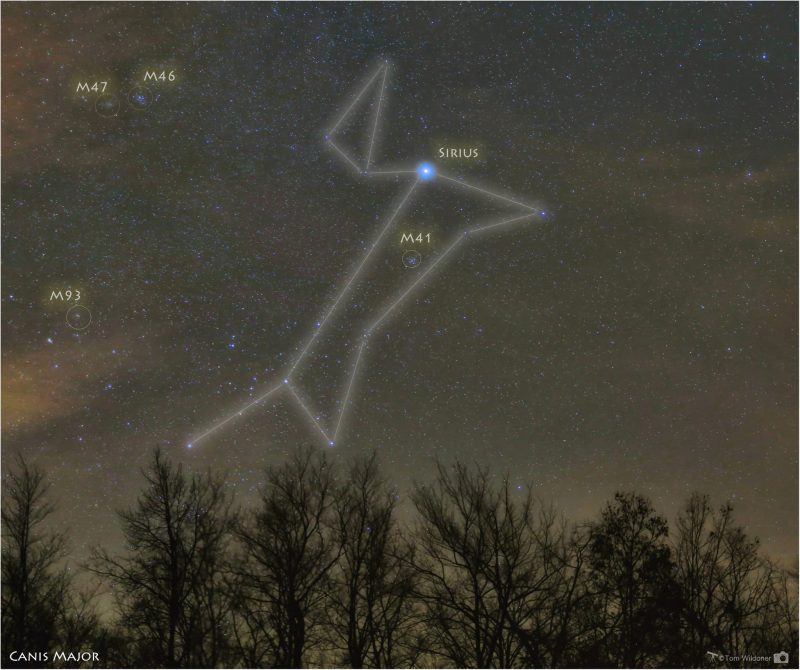The disappearance of a star can take many forms. It could go supernova. It could turn into a black hole. Or it could just fade away quietly. Sometimes, the last of these is actually the most interesting to observe. That is the case for one of the largest stars ever found – VY Canis Majoris, a red supergiant approximately 3840 light years away in the Canis Major constellation.
Continue reading “VY Canis Majoris is “Like Betelgeuse on Steroids””The Canis Major Constellation
Welcome back to Constellation Friday! Today, in honor of the late and great Tammy Plotner, we will be dealing with the “big dog” itself – the Canis Major constellation!
In the 2nd century CE, Greek-Egyptian astronomer Claudius Ptolemaeus (aka. Ptolemy) compiled a list of all the then-known 48 constellations. This treatise, known as the Almagest, would be used by medieval European and Islamic scholars for over a thousand years to come, effectively becoming astrological and astronomical canon until the early Modern Age.
One of these constellations included in Ptolemy’s collection was Canis Major, an asterism located in the southern celestial hemisphere. As one of two constellations representing “the dogs” (which are associated with “the hunter” Orion) this constellation contains many notable stars and Deep Sky Objects. Today, it is one of the 88 constellations recognized by the IAU, and is bordered by Monoceros, Lepus, Columba and Puppis.
Name and Meaning:
The constellation of Canis Major literally translates to “large dog” in Latin. The first recorded mentions of any of the stars associated with this asterism are traced back to Ancient Mesopotamia, where the Babylonians recorded its existence in their Three Star Each tablets (ca. 1100 BCE). In this account, Sirus (KAK.SI.DI) was seen as the arrow aimed towards Orion, while Canis Major and part of Puppis were seen as a bow.
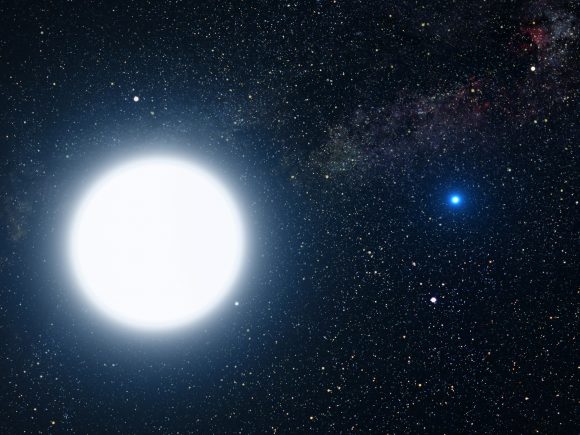
To the ancient Greeks, Canis Major represented a dog following the great hunter Orion. Named Laelaps, or the hound of Prociris in some accounts, this dog was so swift that Zeus elevated it to the heavens. Its Alpha star, Sirius, is the brightest object in the sky (besides the Sun, the Moon and nearest planets). The star’s name means “glowing” or “scorching” in Greek, since the summer heat occurred just after Sirius’ helical rising.
The Ancient Greeks referred to such times in the summer as “dog days”, as only dogs would be mad enough to go out in the heat. This association is what led to Sirius coming to be known as the “Dog Star”. Depending on the faintness of stars considered, Canis Major resembles a dog facing either above or below the ecliptic. When facing below, since Sirius was considered a dog in its own right, early Greek mythology sometimes considered it to be two headed.
Together with the area of the sky that is deserted (now considered as the new and extremely faint constellations Camelopardalis and Lynx), and the other features of the area in the Zodiac sign of Gemini (i.e. the Milky Way, and the constellations Gemini, Orion, Auriga, and Canis Minor), this may be the origin of the myth of the cattle of Geryon, which forms one of The Twelve Lab ours of Heracles.
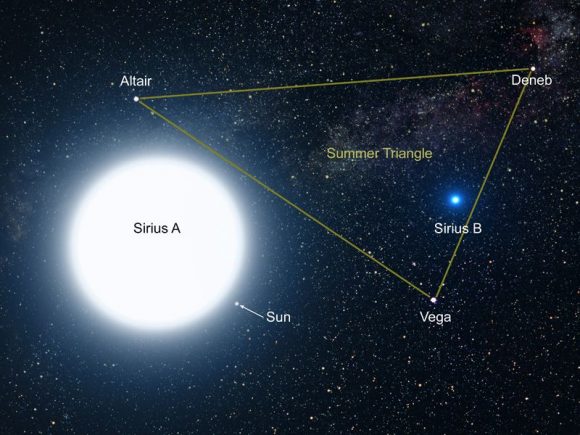
Sirius has been an object of wonder and veneration to all ancient peoples throughout human history. In fact, the Arabic word Al Shi’ra resembles the Greek, Roman, and Egyptian names suggesting a common origin in Sanskrit, in which the name Surya (the Sun God) simply means the “shining one.” In the ancient Vedas this star was known as the Chieftain’s star; and in other Hindu writings, it is referred to as Sukra – the Rain God, or Rain Star.
Sirius was revered as the Nile Star, or Star of Isis, by the ancient Egyptians. Its annual appearance just before dawn at the Summer Solstice heralded the flooding of the Nile, upon which Egyptian agriculture depended. This helical rising is referred to in many temple inscriptions, where the star is known as the Divine Sepat, identified as the soul of Isis.
To the Chinese, the stars of Canis Major were associated with several different asterisms – including the Military Market, the Wild Cockerel, and the Bow and Arrow. All of these lay in the Vermilion Bird region of the zodiac, on of four symbols of the Chinese constellations, which is associated with the South and Summer. In this tradition, Sirius was known Tianlang (which means “Celestial Wolf”) and denoted invasion and plunder.
This constellation and its most prominent stars were also featured in the astrological traditions of the Maori people of New Zealand, the Aborigines of Australia, and the Polynesians of the South Pacific.

History of Observation:
This constellation was one of the original 48 that Ptolemy included in his 2nd century BCE work the Amalgest. It would remain a part of the astrological traditions of Europe and the Near East for millennia. The Romans would later add Canis Minor, appearing as Orion’s second dog, using stars to the north-west of Canis Major.
In medieval Arab astronomy, the constellation became Al Kalb al Akbar, (“the Greater Dog”), which was transcribed as Alcheleb Alachbar by European astronomers by the 17th century. In 1862, Alvan Graham Clark, Jr. made an interesting discovery while testing an 18″ refractor telescope at the Dearborn Observatory at Northwestern University in Illinois.
In the course of observing Sirius, he discovered that the bright star had a faint companion – a white dwarf later named Sirius B (sometimes called “the Pup”). These observations confirmed what Friedrich Bessel proposed in 1844, based on measurements of Sirius A’s wobble. In 1922, the International Astronomical Union would include Canis Major as one of the 88 recognized constellations.
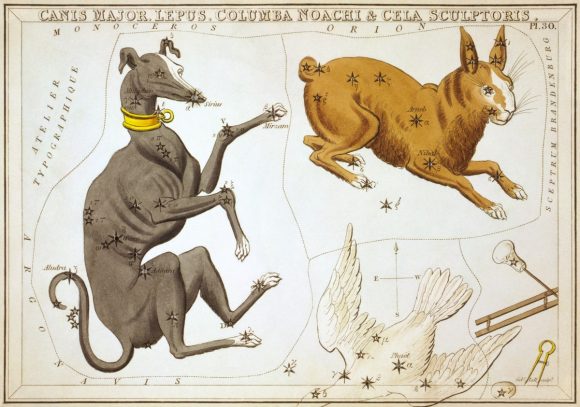
Notable Features:
Canis Major has several notable stars, the brightest being Sirius A. It’s luminosity in the night sky is due to its proximity (8.6 light years from Earth), and the fact that it is a magnitude -1.6 star. Because of this, it produces so much light that it often appears to be flashing in vibrant colors, an effect caused by the interaction of its light with our atmosphere.
Then there’s Beta Canis Majoris, a variable magnitude blue-white giant star whose traditional name (Murzim) means the “The Heralder”. It is a Beta Cephei variable star and is currently in the final stages of using its hydrogen gas for fuel. It will eventually exhaust this supply and begin using helium for fuel instead. Beta Canis Majoris is located near the far end of the Local Bubble – a cavity in the local Interstellar medium though which the Sun is traveling.
Next up is Eta Canis Majoris, known by its traditional name as Aludra (in Arabic, “al-aora”, meaning “the virgin”). This star shines brightly in the skies in spite of its distance from Earth (approx. 2,000 light years from Earth) due to it being many times brighter (absolute magnitude) than the Sun. A blue supergiant, Aludra has only been around a fraction of the time of our Sun, yet is already in the last stages of its life.
Another “major” star in this constellation is VY Canis Majoris (VY CMa), a red hypergiant star located in the constellation Canis Major. In addition to being one of the largest known stars, it is also one of the most luminous ever observed. It is located about 3,900 light years (~1.2 kiloparsecs) away from Earth and is estimated to have 1,420 solar radii.

Canis Major is also home to several Deep Sky Objects, the most notable being Messier 41 (NGC 2287). Containing about 100 stars, this impressive star cluster contains several red giant stars. The brightest of these is spectral type K3, and located near M41’s center. The cluster is estimated to be between 190 and 240 million years old, and its is believed to be 25 to 26 light years in diameter.
Then there’s the galactic star cluster NGC 2362. First seen by Giovanni Hodierna in 1654 and rediscovered William Herschel in 1783, this magnificent star cluster may be less than 5 million years old and show shows signs of nebulosity – the remains of the gas cloud from which it formed. What makes it even more special is the presence of Tau Canis Major.
Easily distinguished as the brightest star in the cluster, Tau is a luminous supergiant of spectral type O8. With a visual magnitude of 4.39, it is 280,000 times more luminous than Sol. Tau CMa is also brighter component of a spectroscopic binary and studies of NGC 2362 suggest that it will survive longer than the Pleiades cluster (which will break up before Tau does), but not as long as the Hyades cluster.
Then there’s NGC 2354, a magnitude 6.5 star cluster. While it will likely appear as a small, hazy patch to binoculars, NGC 2354 is actually a rich galactic cluster containing around 60 metal-poor members. As aperture and magnification increase, the cluster shows two delightful circle-like structures of stars.
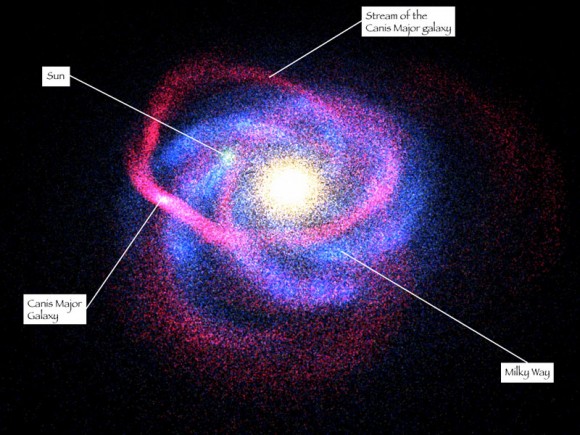
For large telescopes and GoTo telescopes, there are several objects worth studying, like the Canis Major Dwarf Galaxy (RA 7 12 30 Dec -27 40 00). An irregular galaxy that is now thought to be the closest neighboring galaxy to our part of the Milky Way, it is located about 25,000 light-years away from our Solar System and 42,000 light-years from the Galactic Center.
It has a roughly elliptical shape and is thought to contain as many stars as the Sagittarius Dwarf Elliptical Galaxy, which was discovered in 2003 and thought to be the closest galaxy at the time. Although closer to the Earth than the center of the galaxy itself, it was difficult to detect because it is located behind the plane of the Milky Way, where concentrations of stars, gas and dust are densest.
Globular clusters thought to be associated with the Canis Major Dwarf galaxy include NGC 1851, NGC 1904, NGC 2298 and NGC 2808, all of which are likely to be a remnant of the galaxy’s globular cluster system before its accretion (or swallowing) into the Milky Way. NGC 1261 is another nearby cluster, but its velocity is different enough from that of the others to make its relation to the system unclear.
Finding Canis Major:
Finding Canis Major is quite easy, thanks to the presence of Sirius – the brightest star to grace the night sky. All you need to do is find Orion’s belt, discern the lower left edge of constellation (the star Kappa Orionis, or Saiph), and look south-west a few degrees. There, shining in all it glory, will be the “Dog Star”, with all the other stars stemming outwards from it.
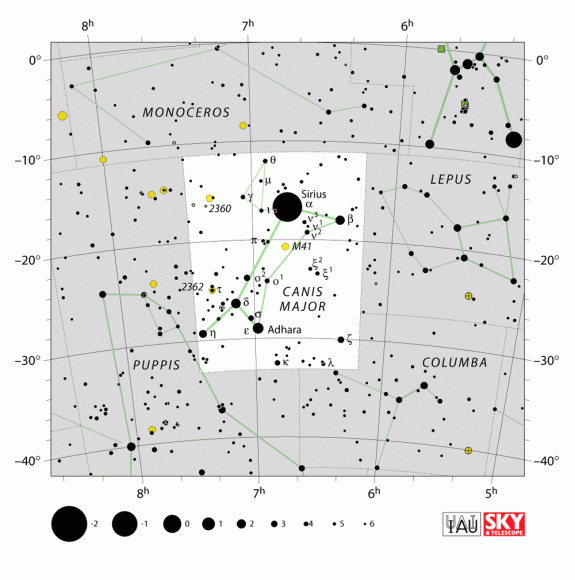
Unfortunately, Sirius A’s luminosity means that the means that poor “Pup” hardly stands a chance of being seen. At magnitude 8.5 it could easily be caught in binoculars if it were on its own. To find it, you’ll need a mid-to-large telescope with a high power eyepiece and good viewing conditions – a stable evening (not night) when Sirius is as high in the sky as possible. It will still be quite faint, so spotting it will take time and patience.
Between Sirius at the northern tip, and Adhara at the south, you can also spot M41 residing almost about halfway. Using binoculars or telescopes, all one need do is aim about 4 degrees south of Sirius – about one standard field of view for binoculars, about one field of view for the average telescope finderscope, and about 6 fields of view for the average wide field, low power eyepiece.
Thousands of years later, Canis Major remains an important part of our astronomical heritage. Thanks largely to Sirius, for burning so brightly, it has always been seen as a significant cosmological marker. But as our understanding of the cosmos has improved (not to mention our instruments) we have come to find just how many impressive stars and stellar objects are located in this region of space.
We have written many interesting articles about the constellation here at Universe Today. Here is What Are The Constellations?, What Is The Zodiac?, and Zodiac Signs And Their Dates.
Be sure to check out The Messier Catalog while you’re at it!
For more information, check out the IAUs list of Constellations, and the Students for the Exploration and Development of Space page on Canes Venatici and Constellation Families.
Sources:
- Wikipedia – Canis Major
- SEDS – Canis Major
- IAU – Canis Major
- Constellation Guide – Canis Major
- Chandra – Canis Major
How Many Galaxies Are There in the Universe?
The wonderful thing about science is that it’s constantly searching for new evidence, revising estimates, throwing out theories, and sometimes discovering aspects of the Universe that we never realized existed.
The best science is skeptical of itself, always examining its own theories to find out where they could be wrong, and seriously considering new ideas to see if they better explain the observations and data.
What this means is that whenever I state some conclusion that science has reached, you can’t come back a few years later and throw that answer in my face. Science changes, it’s not my fault.
I get it, VY Canis Majoris isn’t the biggest star any more, it’s whatever the biggest star is right now. UY Scuti? That what it is today, but I’m sure it’ll be a totally different star when you watch this in a few years.
What I’m saying is, the science changes, numbers update, and we don’t need to get concerned when it happens. Change is a good thing. And so, it’s with no big surprise that I need to update the estimate for the number of galaxies in the observable Universe. Until a couple of weeks ago, the established count for galaxies was about 200 billion galaxies.
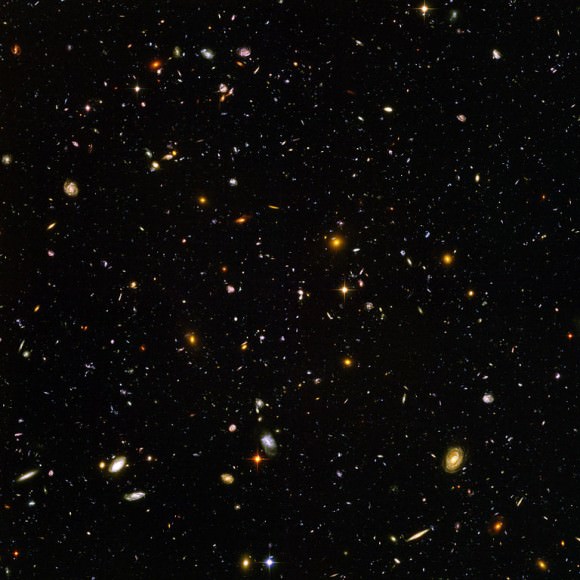
But a new paper published in the Astrophysics Journal revised the estimate for the number of galaxies, by a factor of 10, from 200 billion to 2 trillion. 200 billion, I could wrap my head around, I say billion all the time. But 2 trillion? That’s just an incomprehensible number.
Does that throw all the previous estimates for the number of stars up as well? Actually, it doesn’t.
The observable Universe measures 13.8 billion light-years in all directions. What this means is that at the very edge of what we can see, is the light left that region 13.8 billion years ago. Furthermore, the expansion of the Universe has carried to those regions 46 billion light-years away.
Does that make sense? The light you’re seeing is 13.8 billion light-years old, but now it’s 46 billion light-years away. What this means is that the expansion of space has stretched out the light from all the photons trying to reach us.
What might have been visible or ultraviolet radiation in the past, has shifted into infrared, and even microwaves at the very edge of the observable Universe.
Since astronomers know the volume of the observable Universe, and they can calculate the density of the Universe, they know the mass of the entire Universe. 3.4 x 10^54 kilograms including regular matter and dark matter. They also know the ratio of regular matter to dark matter, so they can calculate the total amount of regular mass in the Universe.
In the past, astronomers divided that total mass by the number of galaxies they could see in the original Hubble data and determined there were about 200 billion galaxies.
Now, astronomers used a new technique to estimate the galaxies and it’s pretty cool. Astronomers used the Hubble Space Telescope to peer into a seemingly empty part of the sky and identified all the galaxies in it. This is the Hubble Ultra Deep Field, and it’s one of the most amazing pictures Hubble has ever captured.
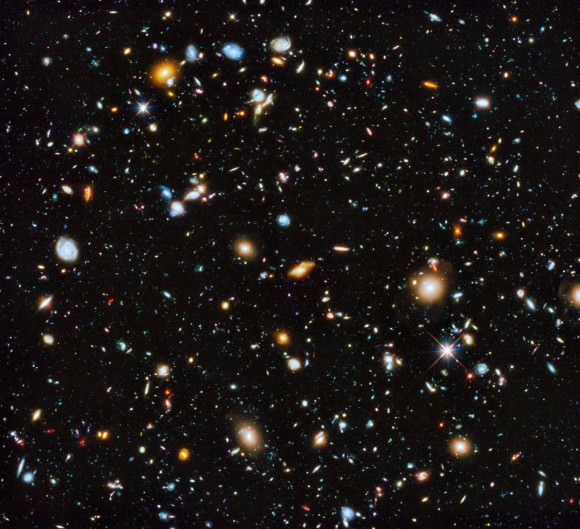
Astronomers painstakingly converted this image of galaxies into a 3-dimensional map of galaxy size and locations. Then, they used their knowledge of galaxy structure closer to home to provide a more accurate estimate of what the galaxies must look like, out there, at the very edge of our observational ability.
For example, the Milky Way is surrounded by about 50 satellite dwarf galaxies, each of which has a fraction of the mass of the Milky Way.
By recognizing which were the larger main galaxies, they could calculate the distribution of smaller, dimmer dwarf galaxies that weren’t visible in the Hubble images.
In other words, if the distant Universe is similar to the nearby Universe, and this is one of the principles of modern astronomy, then the distant galaxies have the same structure as nearby galaxies.
It doesn’t mean that the Universe is bigger than we thought, or that there are more stars, it just means that the Universe contains more galaxies, which have less stars in them. There are the big main galaxies, and then a smooth distribution curve of smaller and smaller galaxies down to the tiny dwarf galaxies. The total number of stars comes out to be the same number.
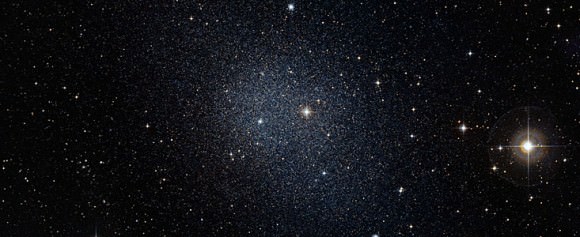
The galaxies we can see are just the tip of the galactic iceberg. For every galaxy we can see, there are another 9, smaller fainter galaxies that we can’t see.
Of course, we’re just a few years away from being able to see these dimmer galaxies. When NASA’s James Webb Space Telescope launches in October, 2018, it’s going to be carrying a telescope mirror with 25 square meters of collecting surface, compared to Hubble’s 4.5 square meters.
Furthermore, James Webb is an infrared telescope, a specialized tool for looking at cooler objects, and galaxies which are billions of light-years away. The kinds of galaxies that Hubble can only hint at, James Webb will be able to see directly.
So, why don’t we see galaxies in all directions with our eyeballs? This is actually an old conundrum, proposed by Wilhelm Olbers in the 1700, appropriately named Olber’s Paradox. We did a whole article on it, but the basic idea is that if you look in any direction, you’ll eventually hit a star. It could be close, like the Sun, or very far away, but whatever the case, it should be stars in all directions. Which means that the entire night sky should be as bright as the surface of a star. Clearly it isn’t, but why isn’t it?
In fact, with 10 times the number of galaxies, you could restate the paradox and say that in every direction, you should be looking at a galaxy, but that’s not what you see.
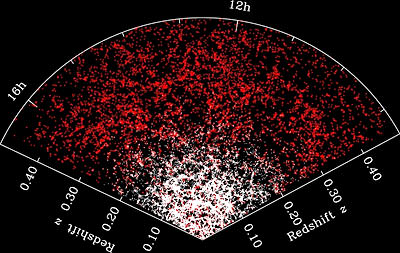
Except you are. Everywhere you look, in all directions, you’re seeing galaxies. It’s just that those galaxies are red-shifted from the visible spectrum into the infrared spectrum, so your eyeballs can’t perceive them. But they’re there.
When you see the sky in microwaves, it does indeed glow in all directions. That’s the Cosmic Microwave Background Radiation, shining behind all those galaxies.
It turns out the Universe has 10 times more galaxies than previously estimated – 2 trillion galaxies. Not 10 times the stars or mass, those numbers have stayed the same.
And, once James Webb launches, those numbers will be fine-tuned again to be even more precise. 1.5 trillion? 3.4 trillion? Stay tuned for the better number.
What is the Biggest Star in the Universe?
This article was originally published in 2008, but has been updated several times now to keep track with our advancing knowledge of the cosmos!
My six-year old daughter is a question-asking machine. We were driving home from school a couple of days ago, and she was grilling me about the nature of the Universe. One of her zingers was, “What’s the Biggest Star in the Universe”? I had an easy answer. “The Universe is a big place,” I said, “and there’s no way we can possibly know what the biggest star is”. But that’s not a real answer.
So she refined the question. “What’s the biggest star that we know of?” Of course, I was stuck in the car, and without access to the Internet. But once I got back home, and was able to do some research, I learned the answer and thought I’d share it with the rest of you But to answer it fully, some basic background information needs to be covered first. Ready?
Solar Radius and Mass:
When talking about the size of stars, it’s important to first take a look at our own Sun for a sense of scale. Our familiar star is a mighty 1.4 million km across (870,000 miles). That’s such a huge number that it’s hard to get a sense of scale. Speaking of which, the Sun also accounts for 99.9% of all the matter in our Solar System. In fact, you could fit one million planet Earths inside the Sun.
Using these values, astronomers have created the terms “solar radius” and “solar mass”, which they use to compare stars of greater or smaller size and mass to our own. A solar radius is 690,000 km (432,000 miles) and 1 solar mass is 2 x 1030 kilograms (4.3 x 1030 pounds). That’s 2 nonillion kilograms, or 2,000,000,000,000,000,000,000,000,000,000 kg.
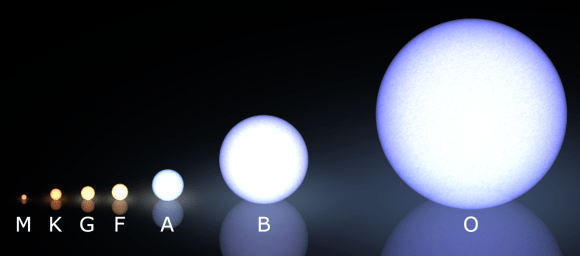
Another thing worth considering is the fact that our Sun is pretty small, as stars go. As a G-type main-sequence star (specifically, a G2V star), which is commonly known as a yellow dwarf, its on the smaller end of the size chart (see above). While it is certainly larger than the most common type of star – M-type, or Red Dwarfs – it is itself dwarfed (no pun!) by the likes of blue giants and other spectral classes.
Classification:
To break it all down, stars are grouped based on their essential characteristics, which can be their spectral class (i.e. color), temperature, size, and brightness. The most common method of classification is known as the Morgan–Keenan (MK) system, which classifies stars based on temperature using the letters O, B, A, F, G, K, and M, – O being the hottest and M the coolest. Each letter class is then subdivided using a numeric digit with 0 being hottest and 9 being coolest (e.g. O1 to M9 are the hottest to coldest stars).
In the MK system, a luminosity class is added using Roman numerals. These are based on the width of certain absorption lines in the star’s spectrum (which vary with the density of the atmosphere), thus distinguishing giant stars from dwarfs. Luminosity classes 0 and I apply to hyper- or supergiants; classes II, III and IV apply to bright, regular giants, and subgiants, respectively; class V is for main-sequence stars; and class VI and VII apply to subdwarfs and dwarf stars.

There is also the Hertzsprung-Russell diagram, which relates stellar classification to absolute magnitude (i.e. intrinsic brightness), luminosity, and surface temperature. The same classification for spectral types are used, ranging from blue and white at one end to red at the other, which is then combined with the stars Absolute Visual Magnitude (expressed as Mv) to place them on a 2-dimensional chart (see above).
On average, stars in the O-range are hotter than other classes, reaching effective temperatures of up to 30,000 K. At the same time, they are also larger and more massive, reaching sizes of over 6 and a half solar radii and up to 16 solar masses. At the lower end, K and M type stars (orange and red dwarfs) tend to be cooler (ranging from 2400 to 5700 K), measuring 0.7 to 0.96 times that of our Sun, and being anywhere from 0.08 to 0.8 as massive.
Based on the full of classification of our Sun (G2V), we can therefore say that it a main-sequence star with a temperature around 5,800K. Now consider another famous star system in our galaxy – Eta Carinae, a system containing at least two stars located around 7500 light-years away in the direction of the constellation Carina. The primary of this system is estimated to be 250 times the size of our Sun, a minimum of 120 solar masses, and a million times as bright – making it one of the biggest and brightest stars ever observed.
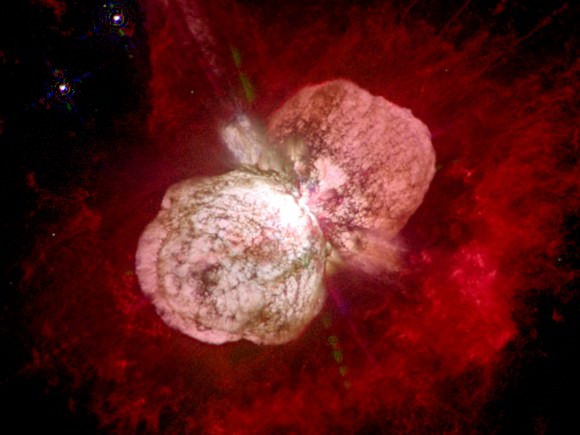
There is some controversy over this world’s size though. Most stars blow with a solar wind, losing mass over time. But Eta Carinae is so large that it casts off 500 times the mass of the Earth every year. With so much mass lost, it’s very difficult for astronomers to accurately measure where the star ends, and its stellar wind begins. Also, it is believed that Eta Carinae will explode in the not-too-distant future, and it will be the most spectacular supernovae humans have ever seen.
In terms of sheer mass, the top spot goes to R136a1, a star located in the Large Magellanic Cloud, some 163,000 light-years away. It is believed that this star may contain as much as 315 times the mass of the Sun, which presents a conundrum to astronomers since it was believed that the largest stars could only contain 150 solar masses. The answer to this is that R136a1 was probably formed when several massive stars merged together. Needless to say, R136a1 is set to detonate as a hypernova, any day now.
In terms of large stars, Betelgeuse serves as a good (and popular) example. Located in the shoulder of Orion, this familiar red supergiant has a radius of 950-1200 times the size of the Sun, and would engulf the orbit of Jupiter if placed in our Solar System. In fact, whenever we want to put our Sun’s size into perspective, we often use Betelgeuse to do it (see below)!
Yet, even after we use this hulking Red Giant to put us in our place, we are still just scratching the surface in the game of “who’s the biggest star”. Consider WOH G64, a red supergiant star located in the Large Magellanic Cloud, approximately 168,000 light years from Earth. At 1.540 solar radii in diameter, this star is currently one of the largest in the known universe.
But there’s also RW Cephei, an orange hypergiant star in the constellation Cepheus, located 3,500 light years from Earth and measuring 1,535 solar radii in diameter. Westerlund 1-26 is also pretty huge, a red supergiant (or hypergiant) located within the Westerlund 1 super star cluster 11,500 light-years away that measures 1,530 solar radii in diameter. Meanwhile, V354 Cephei and VX Sagittarii are tied when it comes to size, with both measuring an estimated 1,520 solar radii in diameter.
The Largest Star: UY Scuti
As it stands, the title of the largest star in the Universe (that we know of) comes down to two contenders. For example, UY Scuti is currently at the top of the list. Located 9.500 light years away in the constellation Scutum, this bright red supergiant and pulsating variable star has an estimated average median radius of 1,708 solar radii – or 2.4 billion km (1.5 billion mi; 15.9 AU), thus giving it a volume 5 billion times that of the Sun.
However, this average estimate includes a margin of error of ± 192 solar radii, which means that it could be as large as 1900 solar radii or as small as 1516. This lower estimate places it beneath stars like as V354 Cephei and VX Sagittarii. Meanwhile, the second star on the list of the largest possible stars is NML Cygni, a semiregular variable red hypergiant located in the Cygnus constellation some 5,300 light-years from Earth.
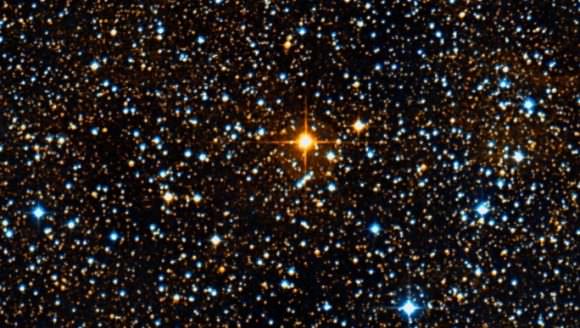
Due to the location of this star within a circumstellar nebula, it is heavily obscured by dust extinction. As a result, astronomers estimate that its size could be anywhere from 1,642 to 2,775 solar radii, which means it could either be the largest star in the known Universe (with a margin of 1000 solar radii) or indeed the second largest, ranking not far behind UY Scuti.
And up until a few years ago, the title of biggest star went to VY Canis Majoris; a red hypergiant star in the Canis Major constellation, located about 5,000 light-years from Earth. Back in 2006, professor Roberta Humphrey of the University of Minnesota calculated its upper size and estimated that it could be more than 1,540 times the size of the Sun. Its average estimated mass, however, is 1420, placing it in the no. 8 spot behind V354 Cephei and VX Sagittarii.
These are the biggest star that we know of, but the Milky way probably has dozens of stars that are even larger, obscured by gas and dust so we can’t see them. But even if we cannot find these stars, it is possible to theorize about their likely size and mass. So just how big can stars get? Once again, Professor Roberta Humphreys of the University of Minnesota provided the answer.

As she explained when contacted, the largest stars in the Universe are the coolest. So even though Eta Carinae is the most luminous star we know of, it’s extremely hot – 25,000 Kelvin – and therefore only 250 solar radii big. The largest stars, in contrast, will be cool supergiants. Case in point, VY Canis Majoris is only 3,500 Kelvin, and a really big star would be even cooler.
At 3,000 Kelvin, Humphreys estimates that cool supergiant would be as big as 2,600 times the size of the Sun. This is below the upper estimates for NML Cygni, but above the average estimates for both it and UY Scutii. Hence, this is the upper limit of a star (at least theoretically and based on all the information we have to date).
But as we continue to peer into the Universe with all of our instruments, and explore it up close through robotic spacecraft and crewed missions, we are sure to find new and exciting things that will confound us further!
And be sure to check out this great animation that shows the size of various objects in space, starting with our Solar System’s tiny planets and finally getting to UY Scuti. Enjoy!
We have written many articles about stars for Universe Today. Here’s The Sun, What’s the Brightest Star in the Sky Past and Future?, and What Is The Smallest Star?
Want to learn more about the birth and death of stars? We did a two part podcast at Astronomy Cast. Here’s part 1, Where Stars Come From, and here’s part 2, How Stars Die.
VY Canis Majoris
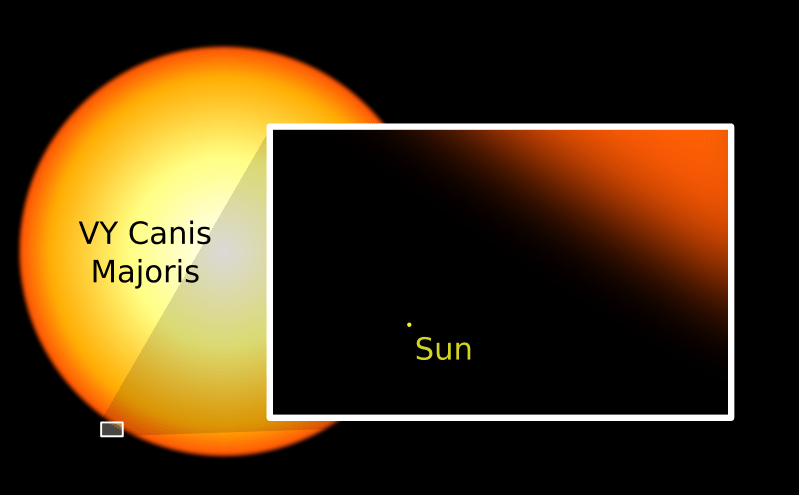
Of all known stars, the VY Canis Majoris is the largest. This red Hypergiant star, found in the constellation Canis Major, is estimated to have a radius at least 1,800 that of the Sun’s. In astronomy-speak we use the term 1,800 solar radii to refer to this particular size. Although not the most luminous among all known stars, it still ranks among the top 50.
Hypergiants are the most massive and luminous of stars. As such, they emit energy at a very fast rate. Thus, hypergiants only last for a few million years. Compare that to the Sun and similar stars that can keep on burning up to 10 billion years.
VY Canis Majoris a.k.a. VY CMa is about 4,900 light years from the Earth. This value, however, is just a rough estimate because it is too far for parallax to be used. Parallax is the most common method for measuring star distances. It is actually a special kind of triangulation method, i.e., similar to the one employed by engineers that make use of angles and a fixed baseline.
Some stars exist in pairs. These are called binary star systems. There are also multiple star systems. VY CMa, however, burns as a single star.
Being a semiregular variable star, VY Canis Majoris exhibits periodic light changes. Its period lasts for about 2,200 days.
The French astronomer Jerome Lalande is credited to be the first person to have recorded VY CMa. The entry in his star catalogue, dated March 7, 1801, lists it as a 7th magnitude star. Apparent magnitude is a unit of measurement for the brightness of a star as observed from Earth. The greater a star’s magnitude, the less bright it is.
Hence, a star with a magnitude of 1 (a.k.a. a 1st magnitude star) is considered among the brightest. There are also negative values, which denote even brighter bodies. Just to give you an idea where VY Canis Majoris stands in terms of brightness, the Sun (the brightest from our perspective) has an apparent magnitude = -26.73, while the faintest objects observable in the visible light spectrum (as detected from the Hubble Telescope) have magnitudes = 30.
It was once believed that VY CMa was a multiple star system. This was due to six discrete components that were measured by observers during the 19th century. Scientists eventually realized that the said discrete components were actually bright areas of the surrounding nebula.
You can read more about the VY Canis Majoris here in Universe Today. Here are the links:
Read more about it at NASA:
Here are two episodes at Astronomy Cast that you might want to check out as well:
Reference:
Wikipedia

